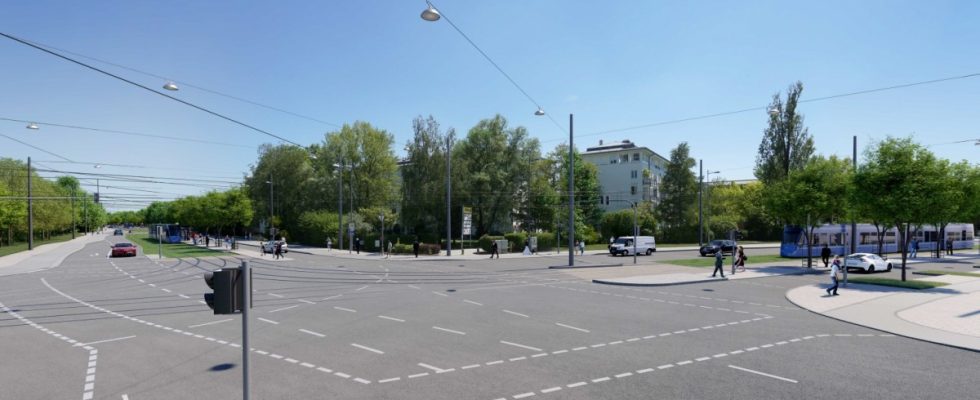Despite the planning problems, the Munich Transport Company (MVG) and the city council are sticking with the construction of the new tram route on Johanneskirchner Straße. If the political majority in the town hall and the MVG have their way, the tram should be running between the junction on Cosimastraße and the Johanneskirchen S-Bahn station by the end of 2025. On Wednesday, the mobility committee rejected an urgent request from the CSU to forego preparatory construction measures until a planning approval decision, i.e. the building permit for the route, has been received.
Nevertheless, things don’t go any further on Johanneskirchner Straße for the time being. The Munich municipal utilities (SWM) have already started tearing up the street there in order to lay cables. Now there will be no work until the government of Upper Bavaria allows it again. The SWM has applied for preliminary approval for the preparatory work from the district government, which is responsible for planning approval. If this is granted, work can at least continue on the lines, even if the planning approval process for the entire project has not yet been completed. Trees would still only be felled after the planning approval decision.
If there is no approval in advance, SWM and its subsidiary MVG hope that the planning approval will be completed by February 2024 at the latest so that they can start felling trees: This is only permitted between October and February. The SWM would then have to apply for a special permit.
The tram route in Johanneskirchen is considered to be section 3 of the later north tram tangent between Neuhausen and Bogenhausen, which is also intended to cross the English Garden. The first section is scheduled to run from Elisabethplatz through Franz-Joseph-Straße to Tivolistraße from 2028, while section 2 is expected to run through Leopoldstraße between Giselastraße, Münchner Freiheit and Ungererstraße from 2029.
The third section is the shortest section, only about 700 meters long. But before even a meter of track is laid, the noise surrounding the short stretch is quite loud. At the end of September, CSU state parliament member Robert Brannekämper and lawyer Benno Ziegler, who represents residents in Bogenhausen, questioned the MVG’s noise report because it only took into account the expected noise from the tram, but not the pollution from the existing railway line.
The MVG assumes approval
In fact, shortly afterwards the MVG initially admitted that the report was incorrect. In the mobility committee, MVG boss Ingo Wortmann explained that the report did not contain any errors. The only thing that counts is the new burden caused by the tram. Nevertheless, when dimensioning the noise protection measures, the overall noise, including the emissions from train traffic, is taken into account. “Nobody has to worry that they won’t get adequate noise protection measures,” said Wortmann.
While opponents of the route assume that the tram project might not get approval at all, Wortmann is convinced of the opposite. The transport benefits, which have been repeatedly questioned, especially by the CSU, are also given. According to the so-called standardized assessment, the route has a benefit-cost factor of 1.48. From a factor of one onwards, a project is considered eligible for funding.
The Greens and the SPD have repeatedly expressed their support for trams. Brigitte Wolf (Left Party) responded to the CSU’s ongoing criticism: For some reason, they hate trams and don’t want “anything to be built in the direction of Johanneskirchen/Englschalking that is reminiscent of an inner-city area.” Fritz Roth (FDP) also criticized the MVG’s communication. The impression arose “that we couldn’t manage 700 meters of tram”.

